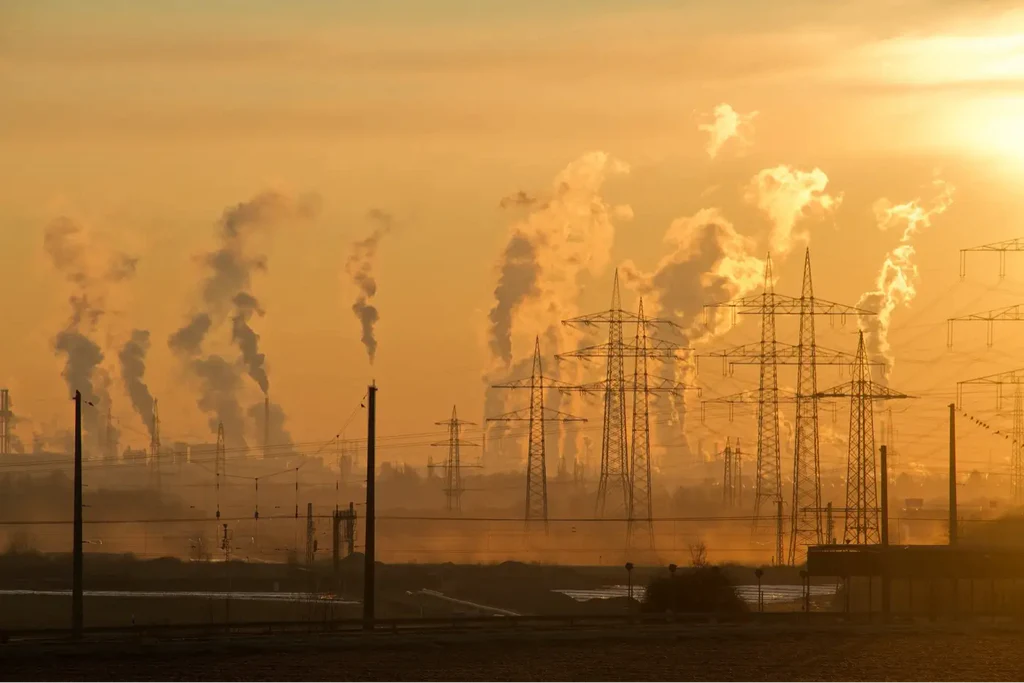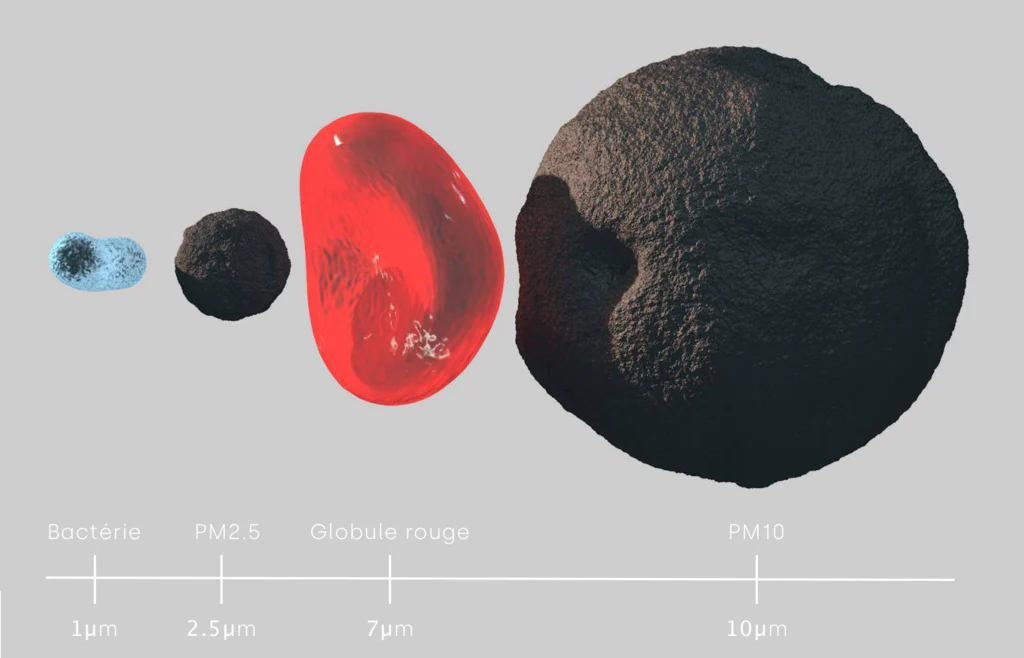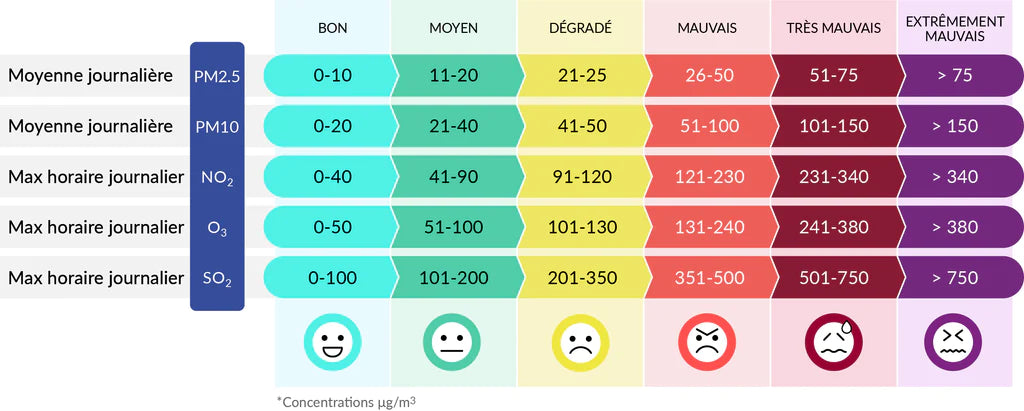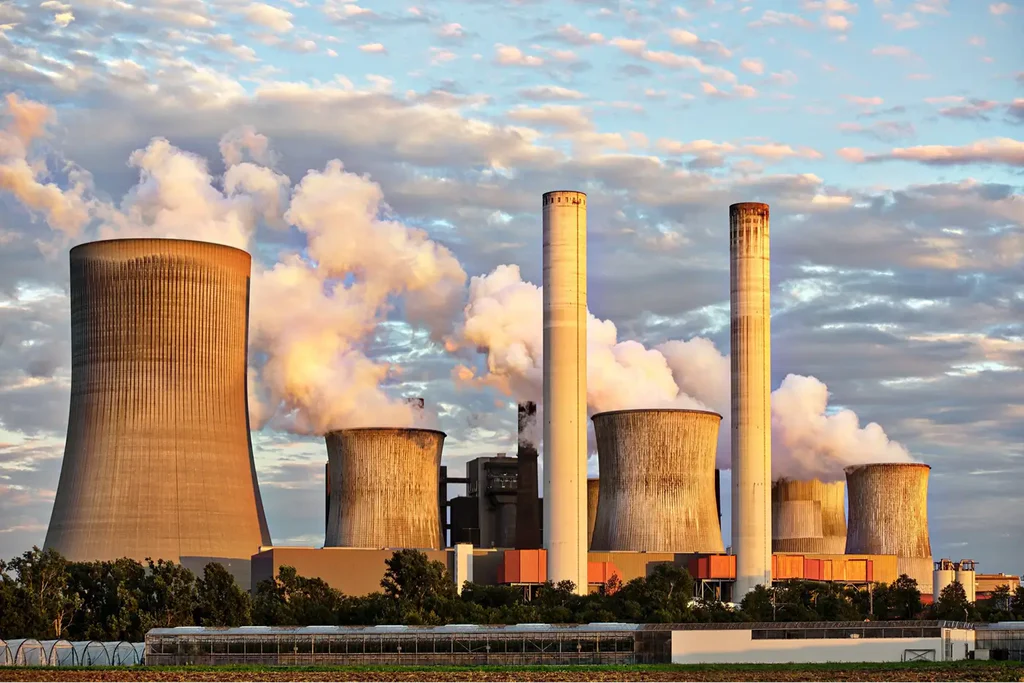
The air quality index is an indicator that allows us to assess air pollution and its impacts on our well-being.
It is used by the competent authorities, environmental associations and citizens to better understand the issues related to air quality and to adopt responsible and environmentally friendly behavior.
You can also find our complete file to easily understand air pollution .

Air Quality Index Basics
This index is based on the measurement of several pollutants present in the atmosphere such as:
- PM10 fine particles
- PM2.5 fine particles
- ozone (O3)
- nitrogen dioxide (NO2)
- sulfur dioxide (SO2)
Each pollutant is evaluated according to a concentration scale ranging from 0 to 10, where 0 represents good air quality and 10 represents very poor quality.
The overall air quality index is obtained by averaging the indices assigned to each pollutant.
You can use the table below to get a better idea of the different pollutants.

Actors involved in air quality monitoring
Government agencies
Air quality monitoring is carried out by various government agencies, including the Ministry of Ecological and Inclusive Transition, the Environment and Energy Management Agency (ADEME) and regional health agencies. .
These organizations set up measuring stations to collect data on the concentrations of pollutants in the atmosphere, analyze this information and regularly publish reports and forecasts on air quality.
Environmental associations
Several environmental associations are also involved in air quality monitoring, notably Atmo France , which brings together approved air quality monitoring associations (AASQA) and the Respire association in France.
These associations' mission is to collect, process and disseminate information on air quality to the general public, local authorities and businesses, in order to raise citizens' awareness of environmental issues and contribute to the development of public policies. promoting healthy air for all.
The impacts of air pollution on our health and our environment
Poor air quality can have harmful consequences on our health and our environment.
Among the most common effects, we find:
- Worsening of respiratory illnesses , such as asthma or chronic bronchitis, due to exposure to fine particles and chemicals in the air;
- Cardiovascular problems , caused by inflammation of blood vessels and the formation of clots;
- Neurological disorders , linked to the accumulation of heavy metals in the brain;
- Cancers , particularly lung cancers, caused by exposure to air pollutants;
- Global warming , due to the emission of greenhouse gases and the reduction in the capacity of vegetation to absorb CO2;
- The degradation of ecosystems , due to pollution of soil, water and air, which disrupts biological cycles and harms biodiversity.

Measures to improve air quality
In order to preserve our health and our environment, it is essential to adopt measures aimed at reducing the sources of air pollution:
- Reduce the use of motorized vehicles : favor public transport, carpooling, walking or cycling.
- Limit industrial emissions : encourage businesses to adopt cleaner, less energy-intensive technologies.
- Promote energy efficiency : develop green buildings and encourage the use of energy-efficient appliances.
- Encourage reforestation : plant trees to absorb CO2 and improve air quality.
- Raise citizen awareness : inform about the impacts of air pollution and promote responsible behavior.
The Air Quality Index is a valuable tool for assessing pollution levels in our environment and anticipating risks to our health.
Stakeholders involved in monitoring air quality have an essential role to play in raising citizens' awareness of environmental issues and encouraging the adoption of measures aimed at preserving healthy air for all.
